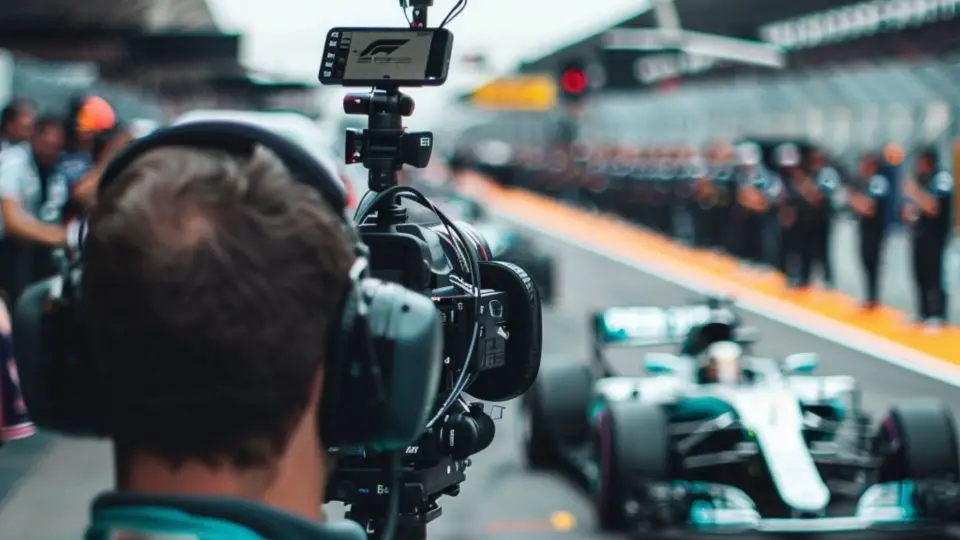F1 News: Drive To Survive Season 6 Under Fire For Fake Coverage
The sixth season of Netflix’s Drive To Survive has sparked controversy for its dramatized portrayal of Formula 1 events, with accusations of fabrication overshadowing its premiere amidst heightened anticipation for the new season.
Key Takeaways:
- Fans criticize the latest season for exaggerating and fabricating content, claiming it deviates from reality.
- Allegations include the use of artificial sound effects and staged scenes, such as Lewis Hamilton’s contract signing with Mercedes.
- Errors, including displaying the Formula 2 grid instead of Formula 1 at the 2023 British Grand Prix, further fuel discontent.

The eagerly awaited sixth installment of “Drive To Survive” has premiered on Netflix, reigniting excitement for Formula 1’s forthcoming season. Nonetheless, the series swiftly became the subject of scrutiny, with detractors claiming it distorts the truth for dramatic effect. Among the contentious practices are the addition of exaggerated sound effects to amplify crash noises and the creative editing of commentators’ remarks to fit the narrative conveniently.
A particularly contentious segment involves Lewis Hamilton’s alleged contract renewal with Mercedes, presented as an intimate behind-the-scenes moment. This portrayal has been debunked, revealing that the event was expressly re-enacted for the Netflix audience. Such revelations have ignited a debate regarding the authenticity of the series’ depiction of Formula 1.
In addition, this season of the show has attracted further scrutiny due to a number of errors. Notably, the Formula 2 grid was mistakenly displayed instead of the Formula 1 lineup at the 2023 British Grand Prix held at Silverstone. Moreover, a discerning ear can detect that several of the radio messages have been reused from different points in the season to amplify the drama—a tactic that has not gone unnoticed in previous seasons.
Despite the criticism, the series has its advocates, particularly among the drivers themselves. George Russell, now in his third year with Mercedes, acknowledges the dramatization inherent in the series, recognizing that such embellishments are a minor compromise for the increased fan engagement and greater visibility that Formula 1 has experienced since the series first aired.
“Netflix is so important for all of us in Formula 1. We’ve seen how the sport has changed for the better over the years, how interaction with fans has increased, how new people have come into the sport.”
“People are upset that everything on ‘Drive To Survive’ is dramatized. But at the end of the day, like any other documentary, you always want to shine the best light on your sport and its history. As long as it has a positive impact on Formula 1, I don’t think there is a real problem.”
However, critics remain unswayed, emphasizing the fundamental expectation for documentary filmmaking to present a truthful depiction of events. This insistence on authenticity may have contributed to the observed decline in viewership.
The premiere week of Drive to Survive Season 6 saw a significant drop in viewership, with Netflix reporting a 30% year-on-year decrease in audience numbers. Despite high anticipation for the series, the initial viewership figures were disappointing. The series attracted an average viewership of only 2.9 million in the first three days, representing a substantial decrease from the performance of the previous season. This decline was further underscored by an 18% reduction in total hours viewed over the first weekend, which amounted to 21.8 million hours, down from 25.76 million hours the previous year.
As Netflix and the Formula One community anticipate the Week 2 viewership statistics, there is growing pressure for the show to recover its momentum and continue its influential role in making Formula One more accessible to audiences worldwide.



